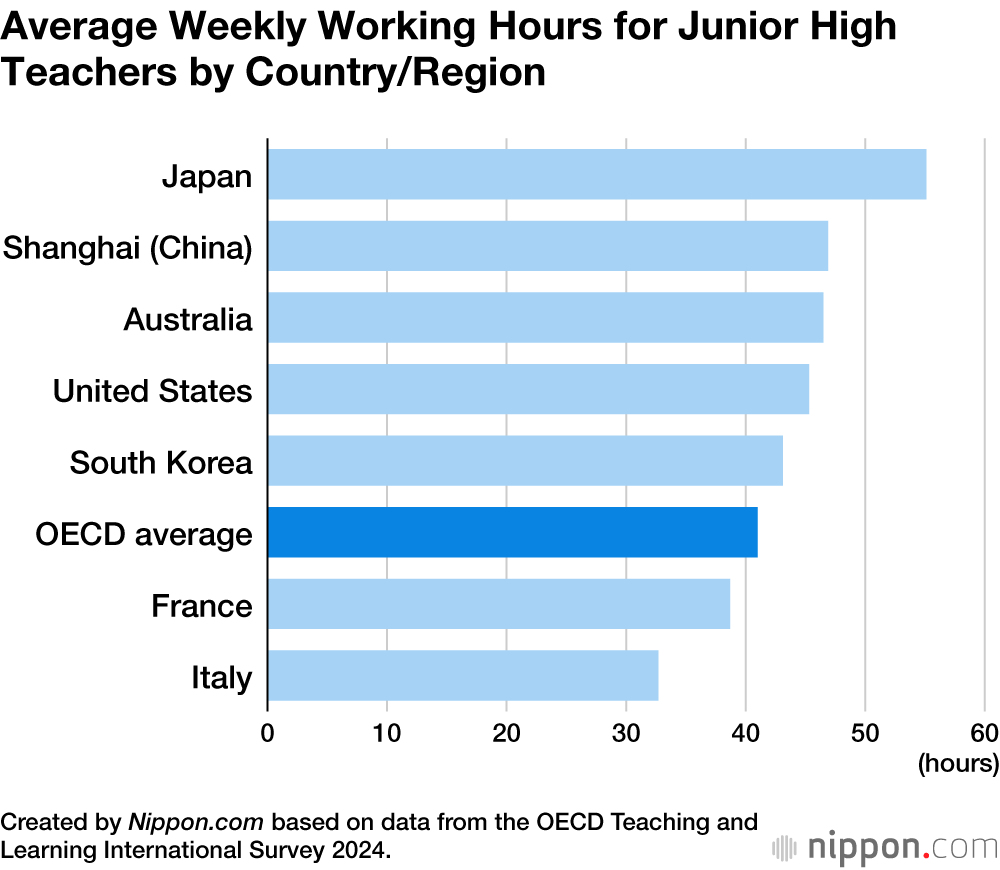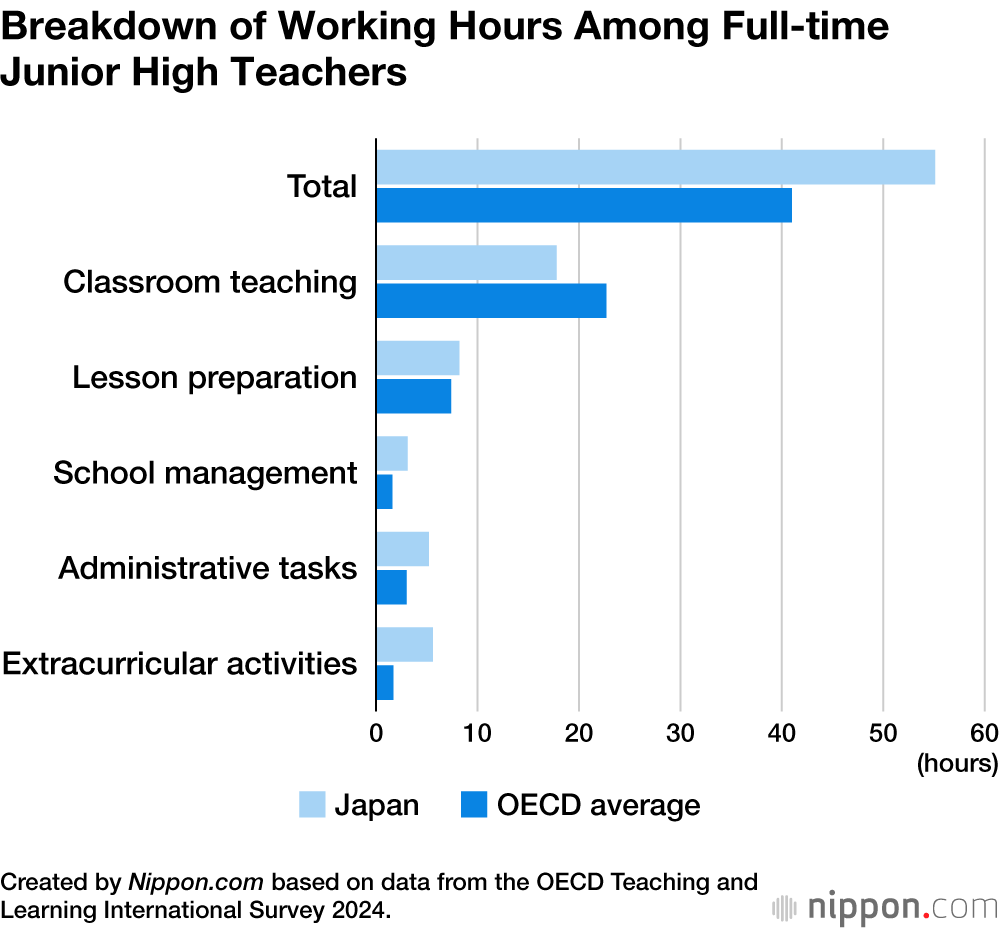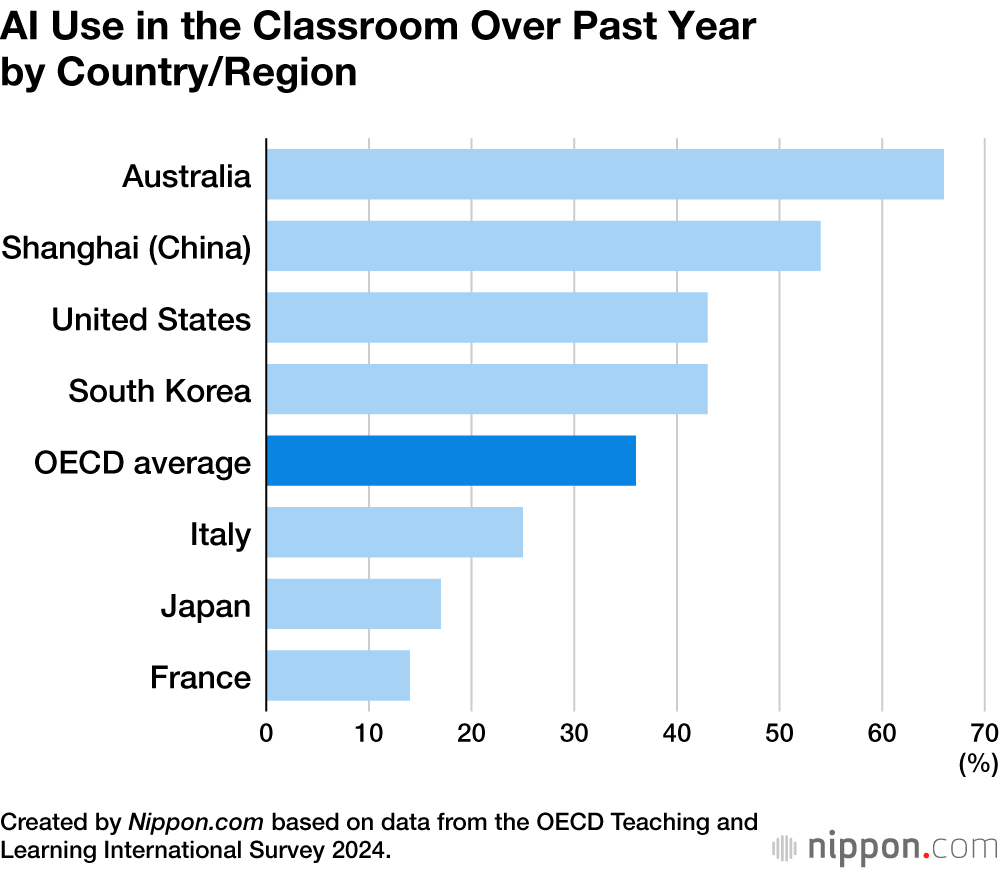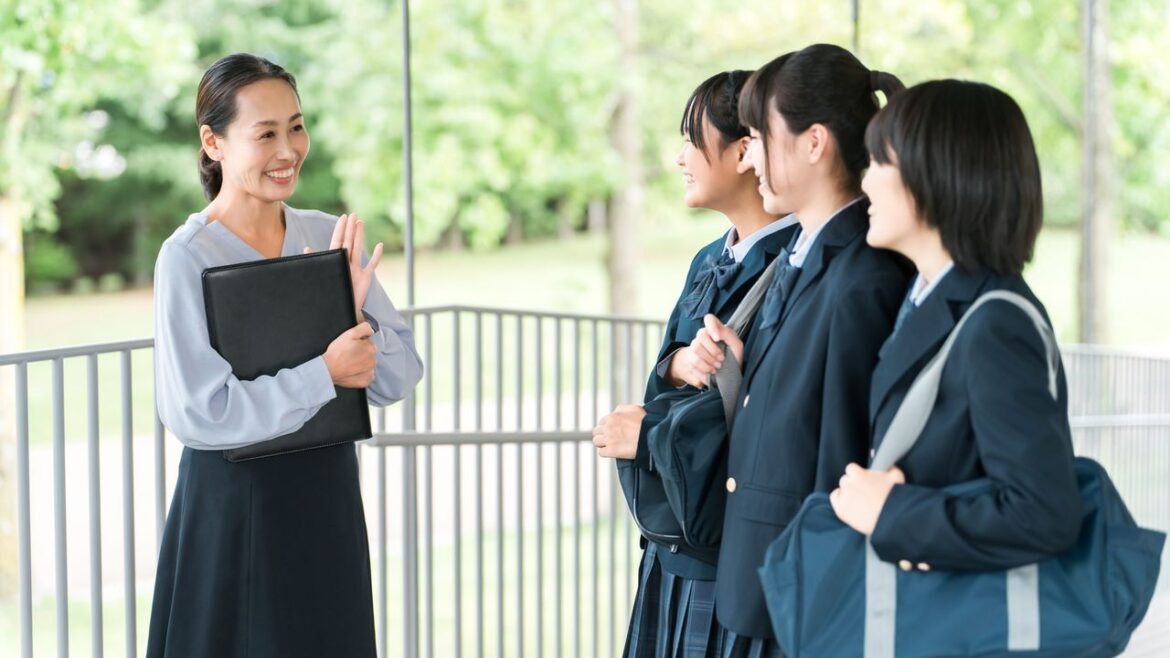Japan Data
Education
Oct 27, 2025
An OECD survey found that teachers in Japan work longer hours than their peers in any other country in the organization, due to spending a lot of time on non-teaching duties.
Working Hours Down, But Still High
According to the OECD’s 2024 Teaching and Learning International Survey, Japan’s full-time teachers have the longest hours for countries within the organization at 55.1 hours for junior high school and 52.1 hours for elementary school instructors.
The survey examines the school environment and working conditions among teachers in OECD and other countries. This was the fourth time for the survey to be conducted. As a rule, it is conducted every five years, but six years have passed since the previous survey due to the impact of the COVID-19 pandemic.
According to the Ministry of Education, Culture, Sports, Science, and Technology (MEXT), weekly working hours at both elementary and junior-high schools had decreased by around four hours compared to the results of the previous survey. Nevertheless, Japanese junior high and elementary school teachers, respectively, worked 14.1 hours and 11.7 hours longer per week than the international average. (The comparison was against the OECD average for junior high schools and against all countries in the survey for elementary schools).

Extracurricular Activities and Admin
The chart shows the number of hours spent on various tasks by full-time junior high teachers in Japan compared to the OECD averages. In terms of actual time spent on classroom teaching, the Japanese average is 17.8 hours, which is shorter than the international average of 22.7 hours. In contrast, Japanese teachers spent far more time on non-teaching duties such as lesson preparation (8.2 compared to 7.4 hours), supervising extracurricular activities (5.6 compared to 1.7 hours) and paperwork and other administrative tasks (5.2 compared to 3.0 hours).

The survey examined the use of artificial intelligence in the classroom, finding that 17% of teachers had used AI in the past year, which was below the OECD average of 36% and second-lowest overall behind France (14%).

The survey also asked teachers in various countries and regions detailed questions about their views on the educational uses of AI. According to MEXT, a relatively high proportion of Japanese teachers view AI as a useful tool for providing personalized support for students or automating administrative tasks. At the same time, the proportion of teachers in Japan who believe that AI could reinforce biased perspectives among students was also above the international average.
Data Sources
(Translated from Japanese. Banner photo © Pixta.)
education
OECD
teacher


AloJapan.com